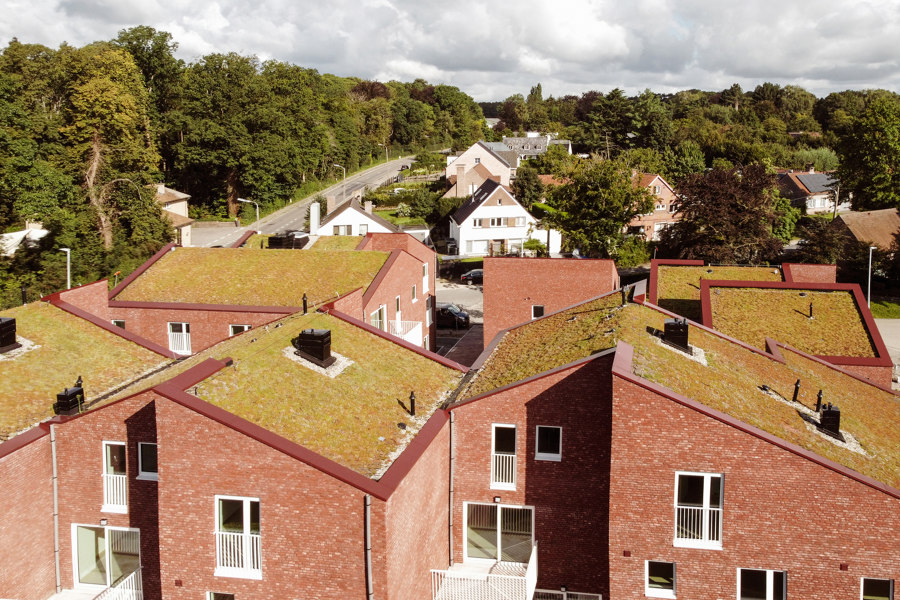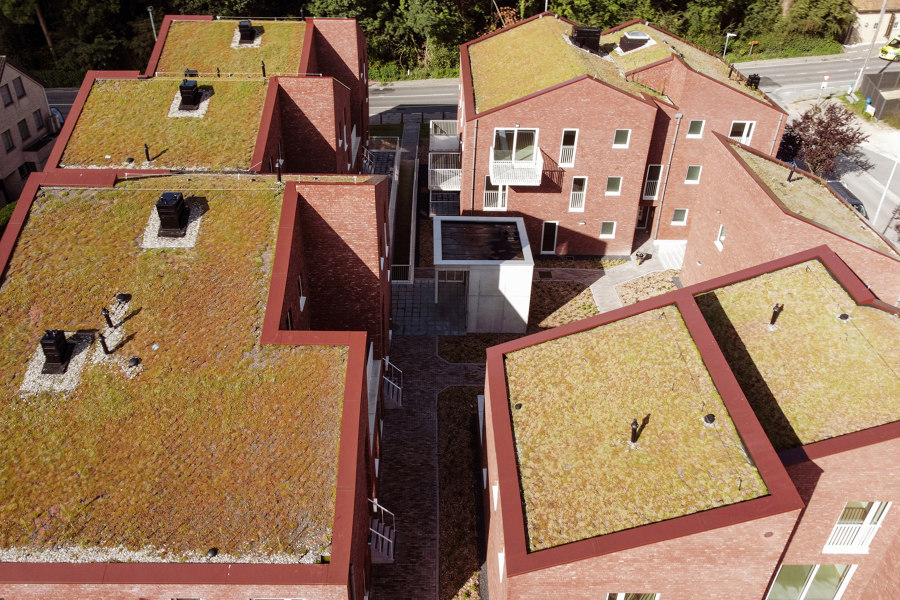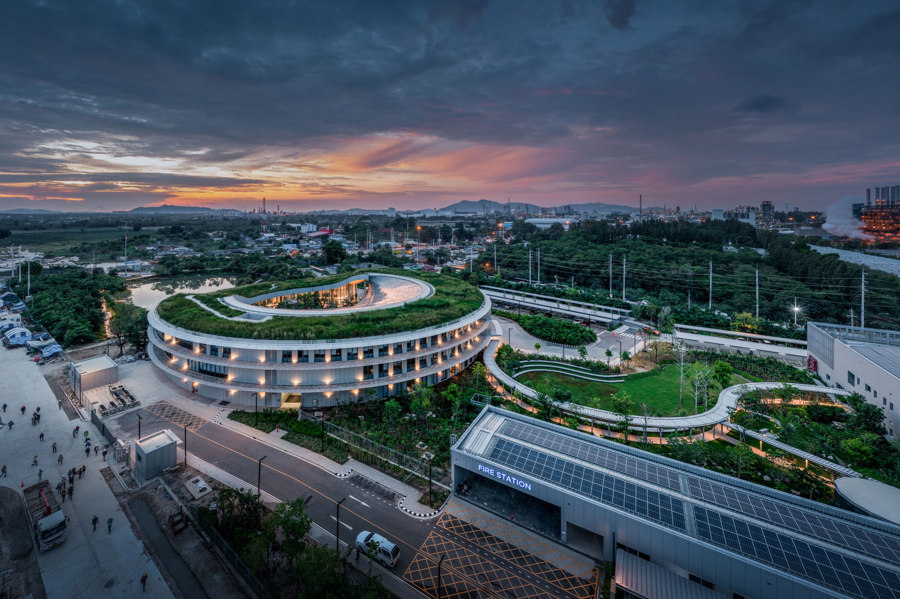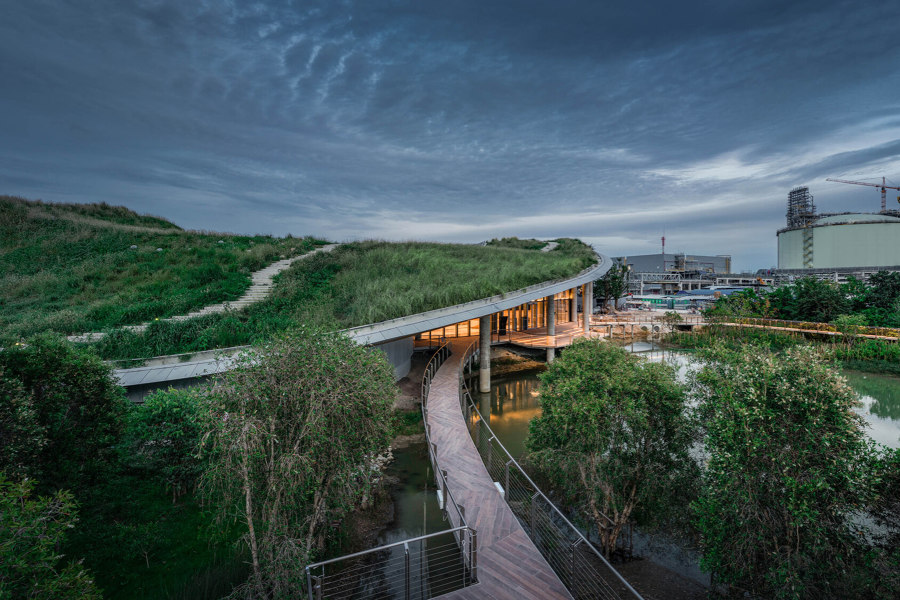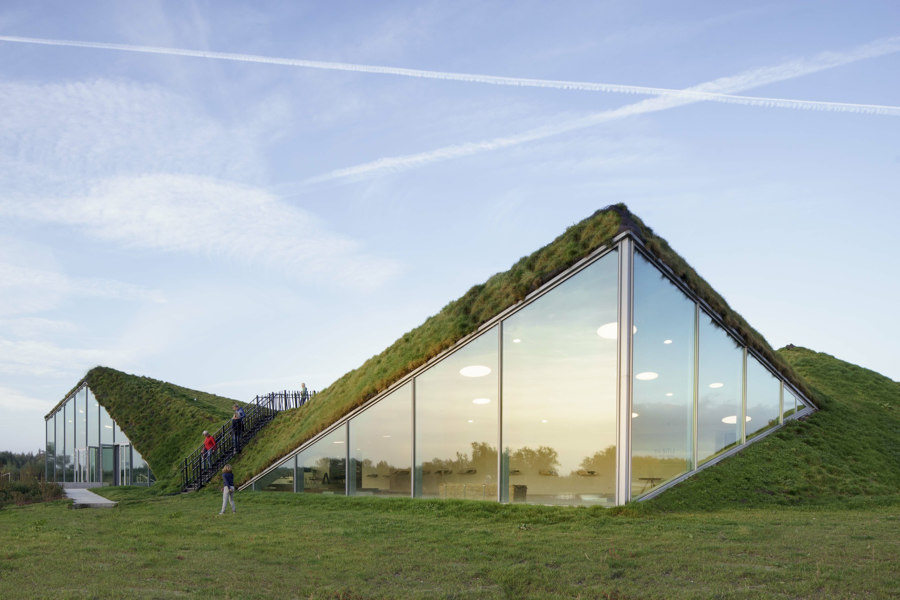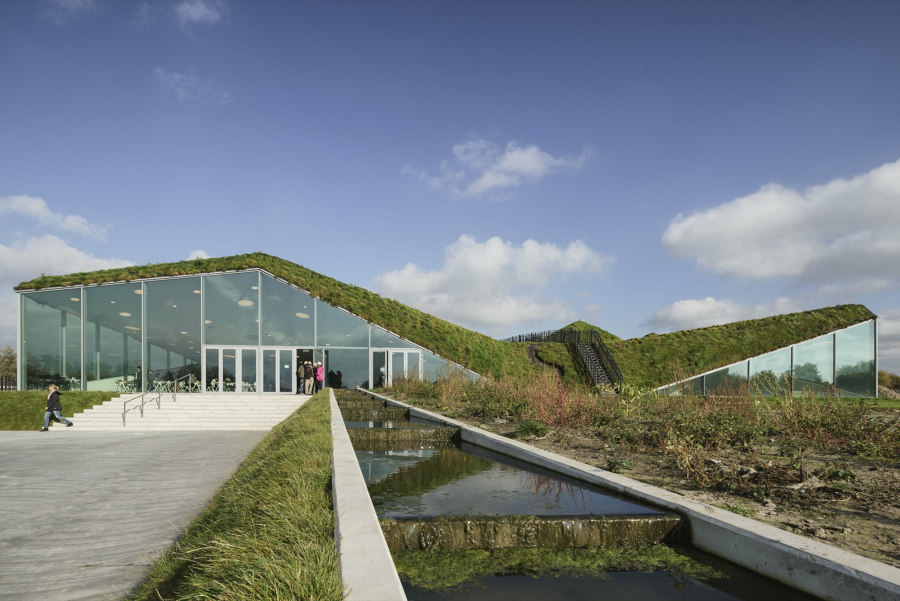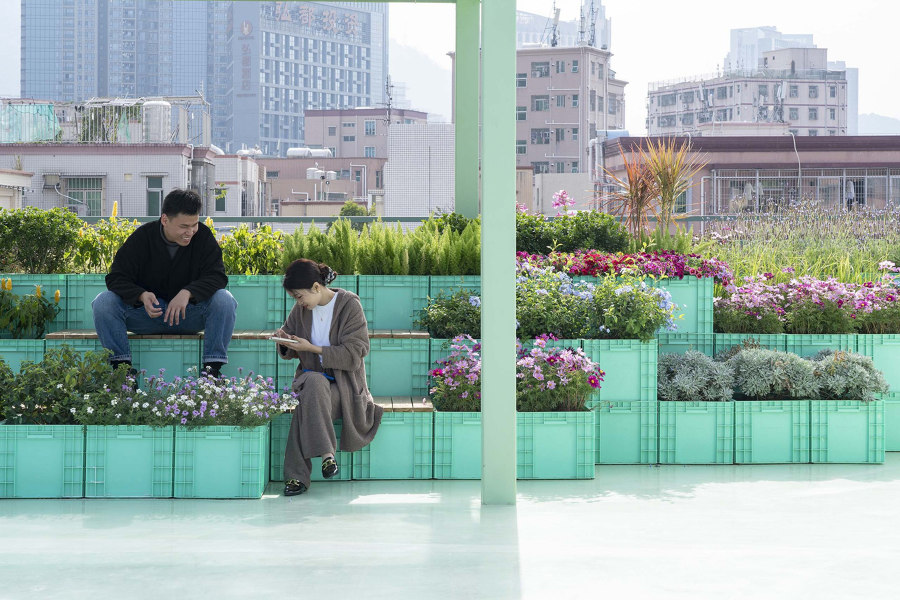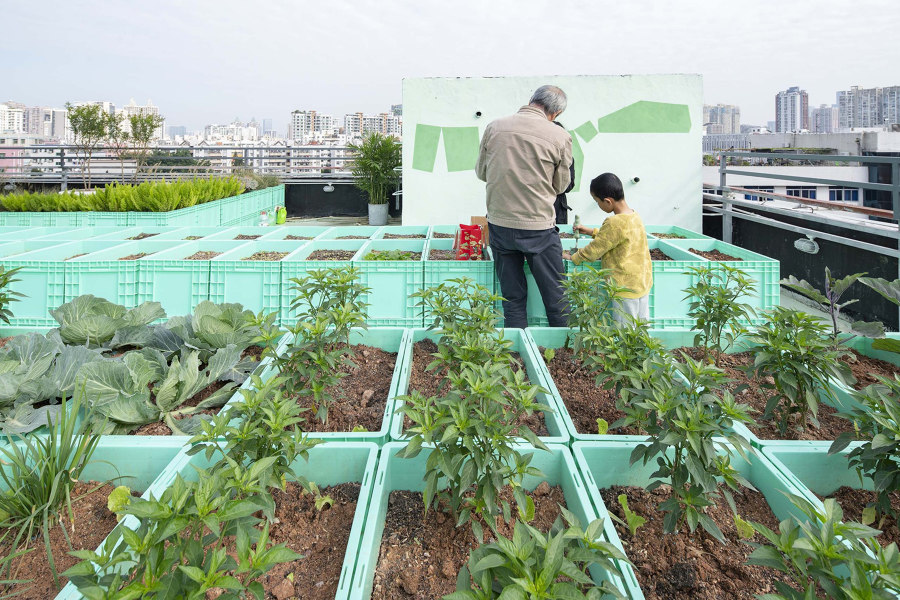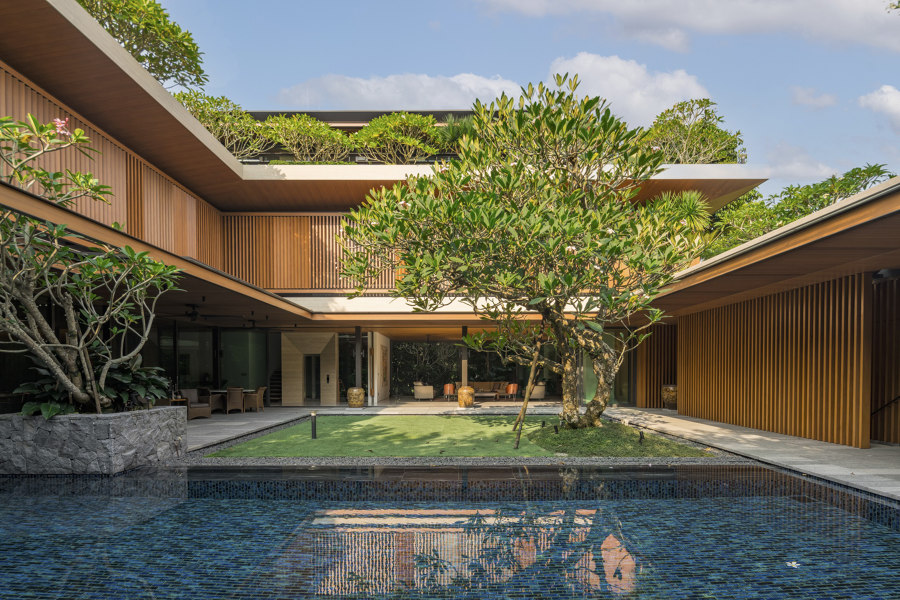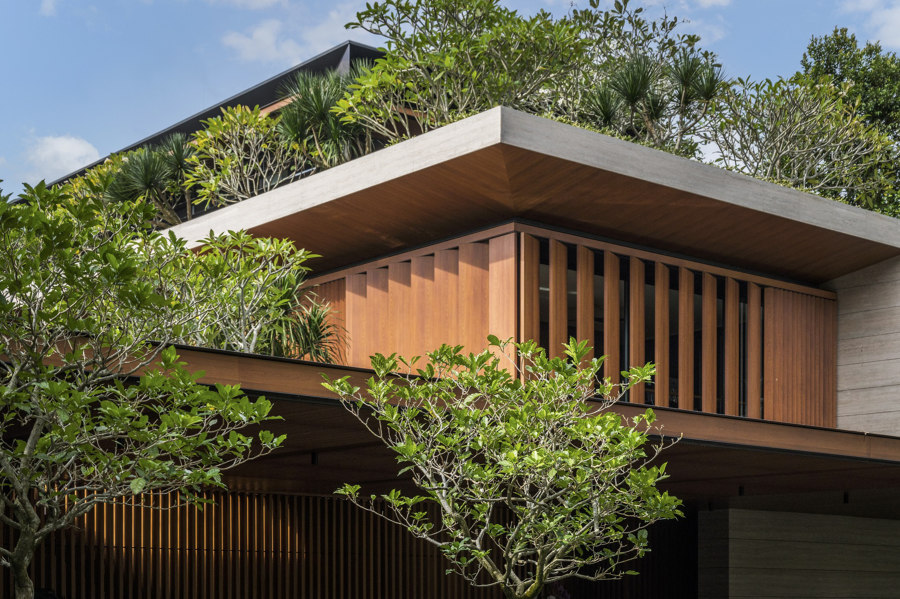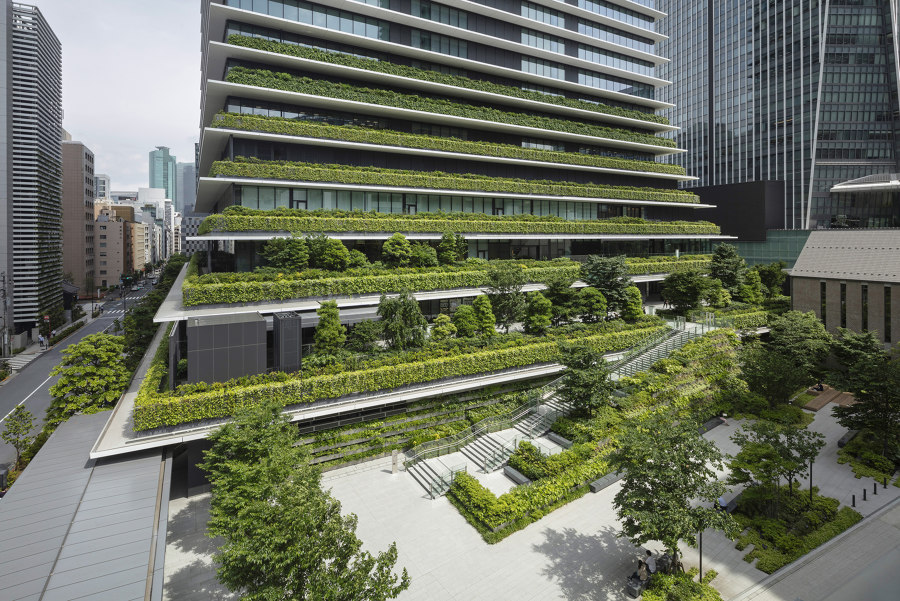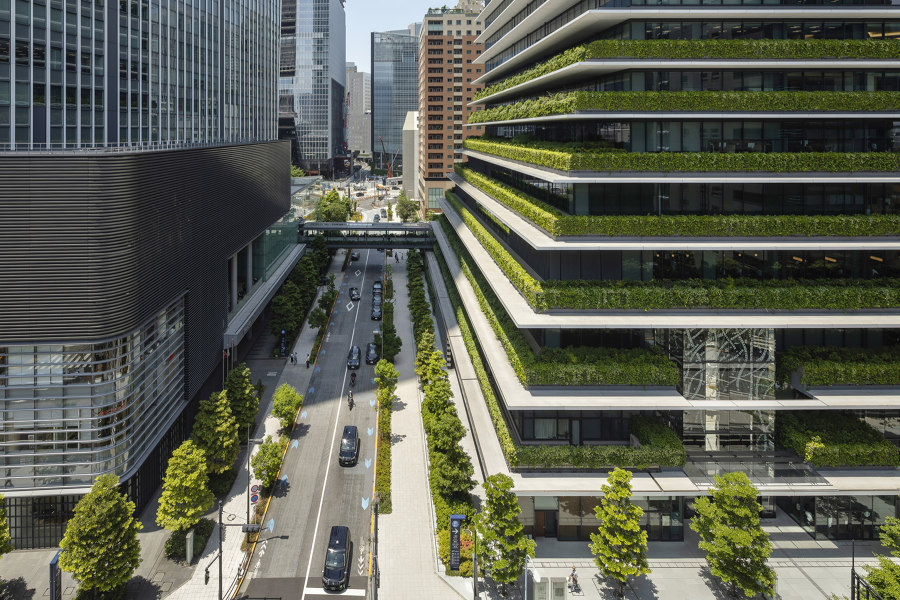The growing advantages of green roofs: bringing buildings to life
Scritto da James Wormald
01.05.23
Once seen as a complex and costly solution, living roofs are now growing in popularity, bringing many environmental benefits to projects big and small.
The green roof of Thailand’s Center for Excellence for Forest Conservation rejuvenated the ecosystem and environment in a previously destroyed area of wetland. Photo: DOF Sky|Ground
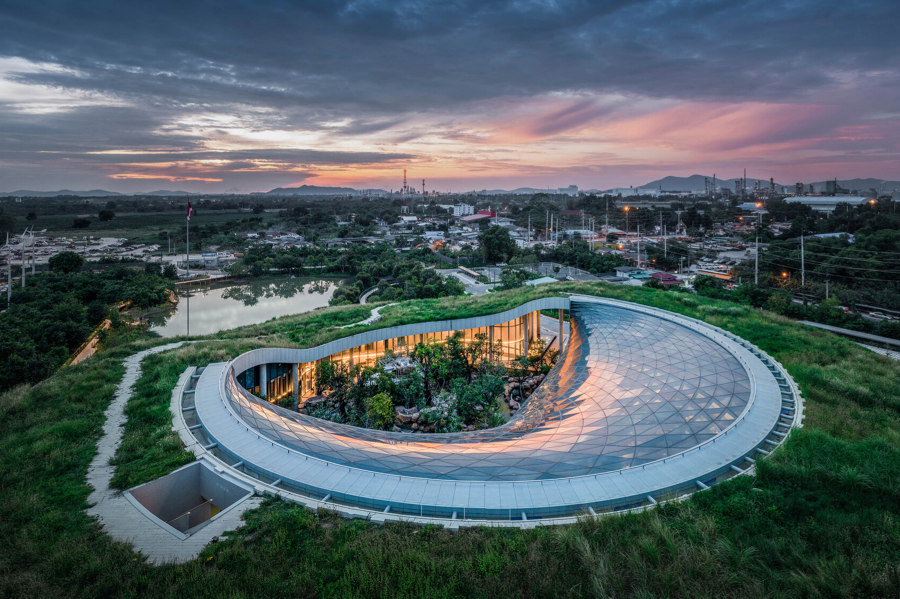
The green roof of Thailand’s Center for Excellence for Forest Conservation rejuvenated the ecosystem and environment in a previously destroyed area of wetland. Photo: DOF Sky|Ground
×As one of the best-known of the Seven Wonders of the World, the Hanging Gardens of Babylon are, perhaps, the earliest and most famous example of a green roof. Why, then, with such an inspirational example built over 2,500 years ago, has it taken so long to combine gardening with architecture on a bigger scale? In the eco-conscious world we now live in, the previously negative cost/benefit relationship of an insulating, biodiverse rooftop is starting to pitch the other way. These are just some of the advantages provided by a modern green roof:
Long-term durability is added to the Dendermondse Volkswoningen social housing project’s roofscape with weather-proof green roofs. Photos: Jelle Vans Photography

Long-term durability is added to the Dendermondse Volkswoningen social housing project’s roofscape with weather-proof green roofs. Photos: Jelle Vans Photography
×Weather-proof the roof: organic matter adds a layer of protection
One of the most typical restrictions on a roof’s lifespan is that it’s under constant attack from the elements. Either soaked by rain, battered by hail or covered in snow and ice during one season, then hit with ultraviolet light and fluctuating temperatures the next. Even though it’s assumed that green roofs are more susceptible to leakage, when installed professionally a barrier of herbage can help to actually protect the waterproof membrane underneath, increasing a roof’s life expectancy. Something which is especially imperative in low-cost social housing projects such as the Dendemondse Volkswoningen Housing project in Waasmunster, Belgium.
Exemplifying how green roofs can become part of a project’s natural water flow system, the Center increases the urbanised area’s natural capacity for water absorption: Photos: DOF Sky|Ground

Exemplifying how green roofs can become part of a project’s natural water flow system, the Center increases the urbanised area’s natural capacity for water absorption: Photos: DOF Sky|Ground
×Flood protection: high-rise barrier reversing urbanisation
Green spaces are excellent and natural ways to absorb and allow rainwater to gradually enter an ecosystem. Take that away with too much urbanisation, and periods of heavy rainfall cause flooding. Green roofs are able to recreate this natural capacity for water absorption. At the site of Thailand’s Center for Excellence for Forest Conservation, for example, Architects 49 recreated an area of wetland that had previously been destroyed. The Center’s green roof creates ‘a natural water flow system, which resulted in the rejuvenation of the ecosystem and environment,’ explain the architects.
The Biesboch Museum Island building protects its extremities from heat loss by wearing a thick layer of vegetation-like knitwear. Photos: Ronald Tilleman
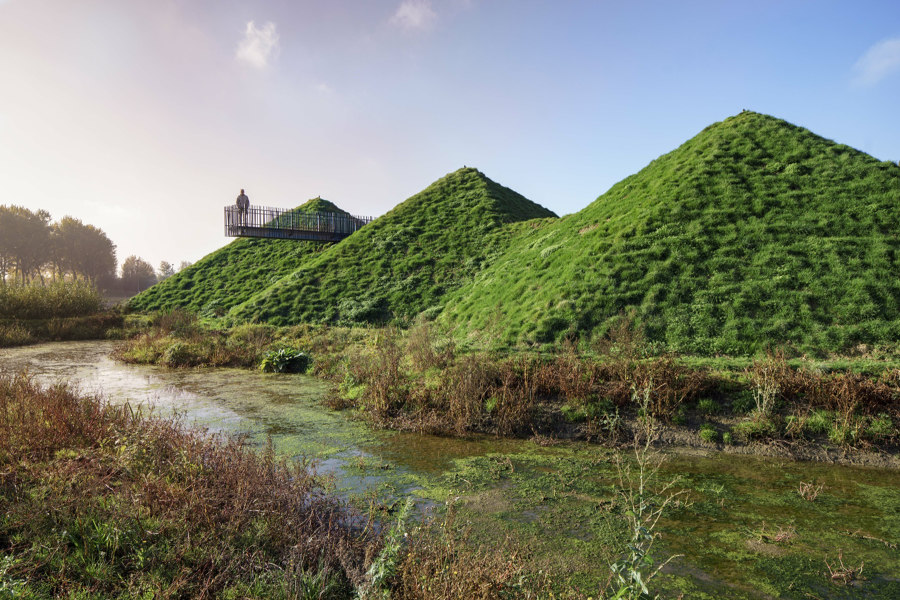
The Biesboch Museum Island building protects its extremities from heat loss by wearing a thick layer of vegetation-like knitwear. Photos: Ronald Tilleman
×Thermal insulation on the outside
I often reach for the cosiness of my bobble hat when it’s cold out, helping me to retain my hard-earned body heat. And buildings are no different; those with more insulation in the roof cavity keep their internal heat for longer. But insulation doesn’t have to only be on the inside. Thick green roofs like the one atop Biesboch Museum Island in Wekendem, The Netherlands, offer a layer of ‘out’sulation that ‘minimises the building’s energy consumption,’ share the architects Studio Marco Vermuelen, with ‘the earthworks and the green roof serving as additional insulation and a heat buffer.’
At the community Green Cloud Garden, residents share space amongst flowers (top), herbs and smallholding crops (middle) and solar panels with increased efficiency (bottom). Photos: Siming Wu
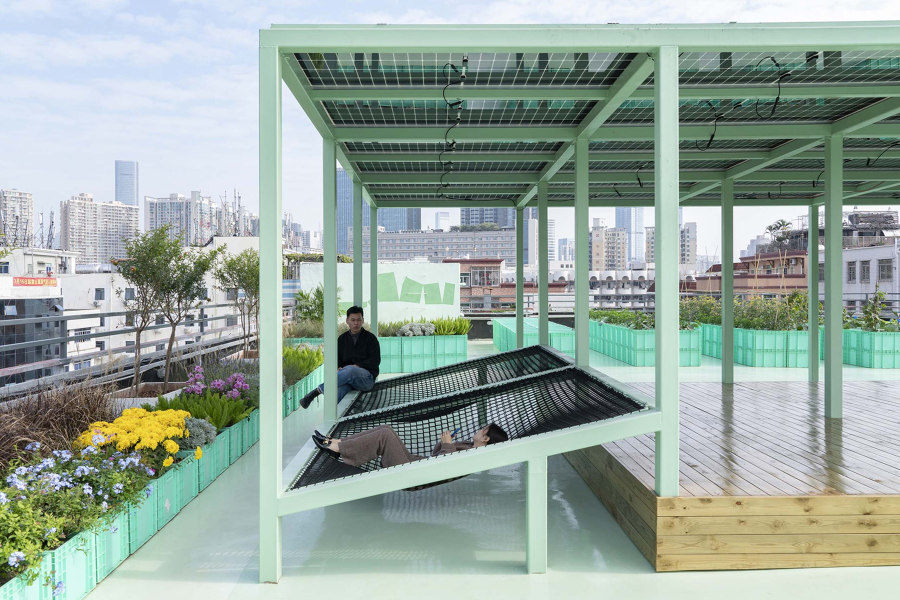
At the community Green Cloud Garden, residents share space amongst flowers (top), herbs and smallholding crops (middle) and solar panels with increased efficiency (bottom). Photos: Siming Wu
×Other environmental arguments for green roofs
Keeping interiors warm has additional benefits, too, of course, and is just one in a long list of the climate-conscious advantages of green roofs. Whether covered in sedum mats, blankets of grass, wildflower meadows or cultivated into accessible gardens like the Green Cloud Garden in Shenzhen, China, increasing organic square meterage helps to recreate lost habitats for insects, improves both the air quality and ambient temperature of the surrounding area and although one of the assumed drawbacks of green roofs is limited solar energy production, the presence of one is scientifically proven to increase solar panel efficiency.
The Forgetting Time House uses planted trees to create an acoustic and visual barrier around its roof garden and terrace. Photos: Wallflower Architecture + Design & Marc Tan Shengyi

The Forgetting Time House uses planted trees to create an acoustic and visual barrier around its roof garden and terrace. Photos: Wallflower Architecture + Design & Marc Tan Shengyi
×The acoustic sanctuary of a green garden roof
Along with absorbing water and heat, a green roof also soaks up sound, providing an acoustic barrier protecting the interior from howling wind and the magnified cacophony of rainfall, while on the outside, too, the soft layer brings acoustic protection to its surroundings. Built at the end of a cul-de-sac, the Forgetting Time House was already in a quiet location, but sought the peace and privacy of isolation. At the top of the home sits a private study ‘shielded by the rooftop terrace,’ explains Wallflower Architecture + Design, ‘the space is acutely discreet but captures the very best of the surrounding canvas of greenery.’
By adding layers of moisture-grabbing greenery to high-rise balconies like here at the Toranomon Hills Tower in Japan, projects can improve their fire safety. Photos: ingenhoven associates/HGEsch

By adding layers of moisture-grabbing greenery to high-rise balconies like here at the Toranomon Hills Tower in Japan, projects can improve their fire safety. Photos: ingenhoven associates/HGEsch
×Green roof balconies offer a fire-proof layer of moisture
Making them harder for fire crews to reach, the height of high-rise buildings makes them especially susceptible to serious fire. Regulations ensure high-rise structures are built to exacting standards, using high-grade materials and designs that sufficiently resist fire and stop the spread of smoke, but buildings like the Toranomon Hills Tower in Japan, whose balconies incorporate green roof elements, add a natural barrier of moisture between each storey – like cream in a multi-layered cake, reducing the speed and spread of fire.
© Architonic
Head to the Architonic Magazine for more insights on the latest products, trends and practices in architecture and design, or find inspiration in a whole world of projects from around the globe through ArchDaily’s architecture catalogue.

